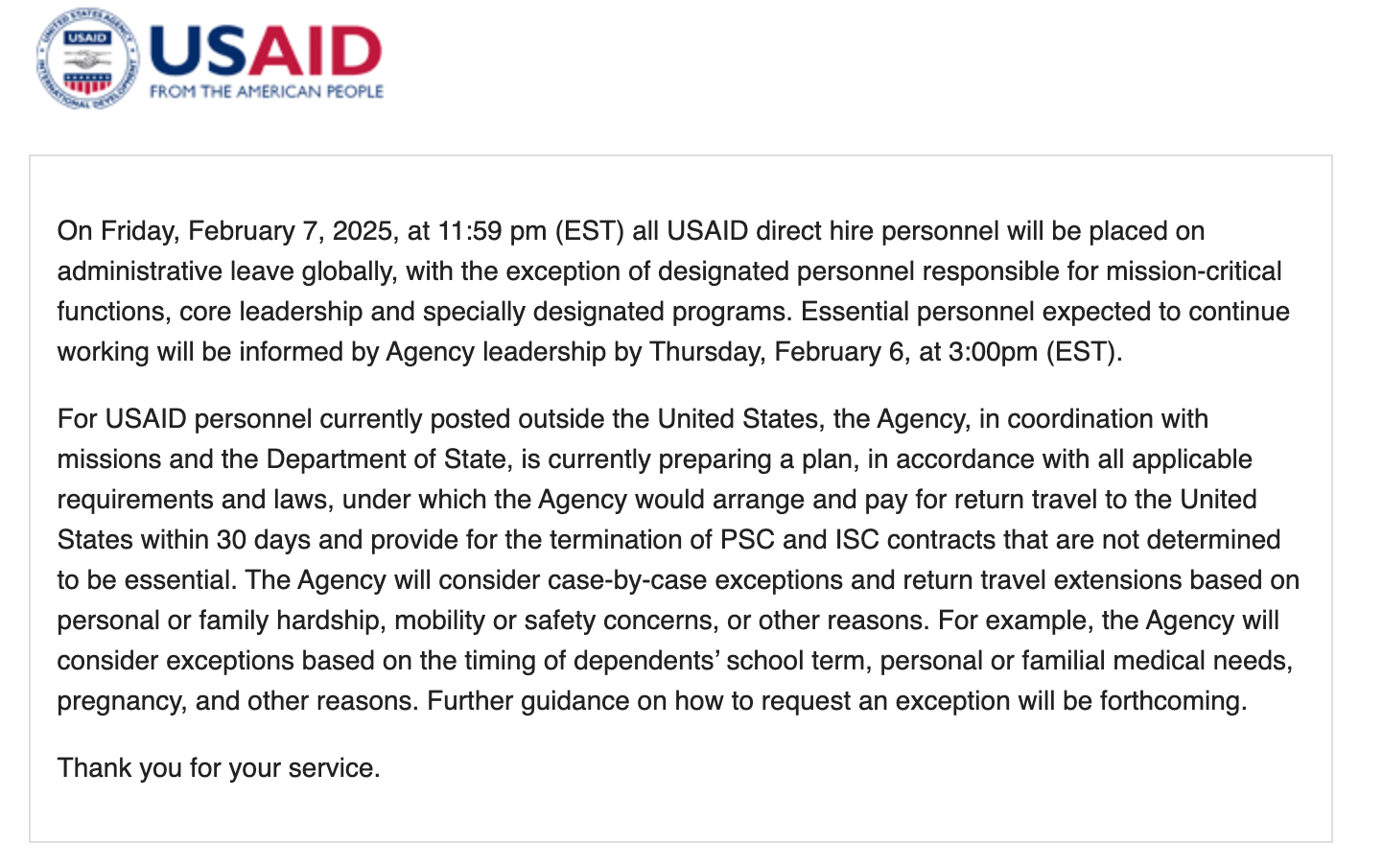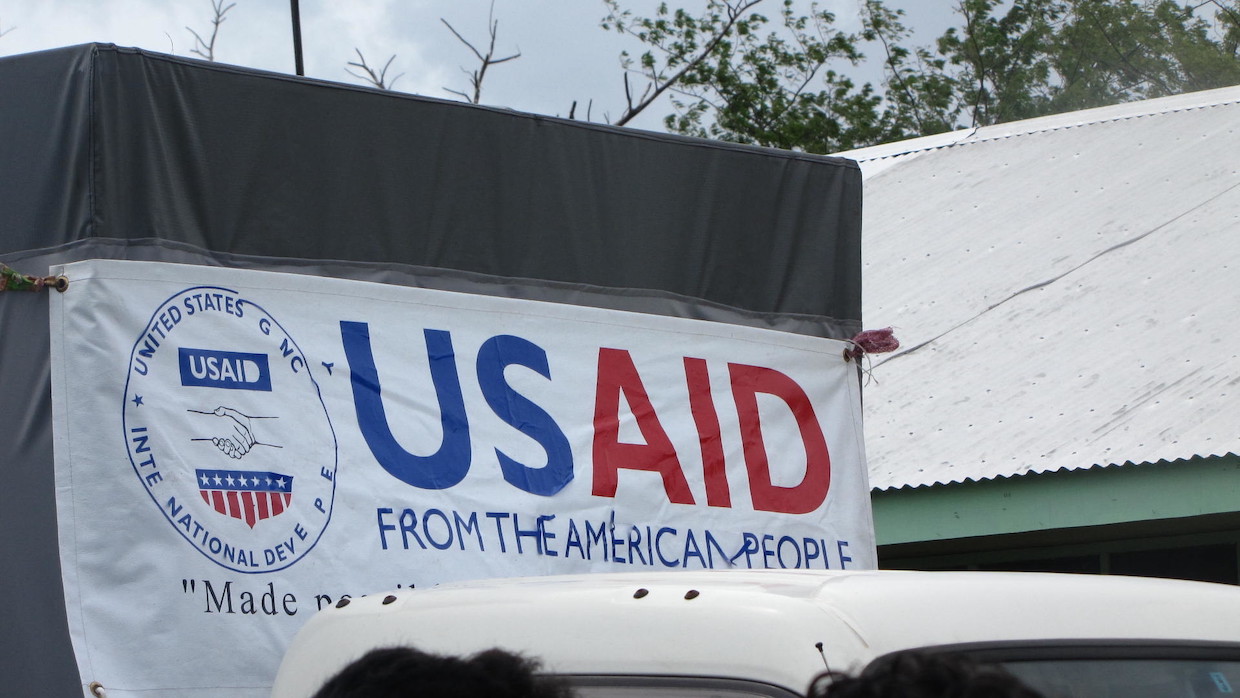The phrase “political instability” is commonly cited as a threat to sustainability in coffee. Among organizations and analysts in the Global North, the phrase is most often applied to coffee-producing countries.
Yet in recent days, political instability has shaken the global coffee industry — this time, from the U.S. government’s own executive branch.
In the three tumultuous weeks of Donald Trump’s presidential administration — during which time, incidentally, commodity prices for coffee reached all-time highs — the coffee market has experienced a series of separate volatility-inducing blows, including Trump’s tariff threats to Colombia, and the looming trade wars with Mexico, Canada and China.
Yet the most damaging blow may be the sudden and chaotic dismantling of USAID, the primary international relief agency of the United States that has contributed tens of millions of dollars to the global coffee sector over the past three decades.
With a directive to promote American democracy while promoting trade, decreasing poverty and addressing food security, among other noble ambitions, the federal agency has provided key financial backing for dozens of projects affecting the coffee industry, working with foreign governments as well as implementing partners in the private and nonprofit sectors.
Those organizations, and the thousands of people within them, were immediately left in the lurch when the Trump administration ordered a freeze on international foreign aid. Now we know that all USAID staffers were put on administrative leave last Friday, asked to stay home while the paperwork for their dismissals is ironed out.
DCN has attempted to reach former USAID staff members who have been involved with coffee-focused projects or disaster relief services to coffee-producing communities, with none yet willing to go on the record.
Meanwhile, the diplomatic and social implications of USAID’s abrupt exit from the international coffee industry are impossible to quantify. But we can look at some numbers from recent years:
- In 2024, USAID contributed to a joint $1.5 million effort, led by green coffee company JNP Coffee, to create a coffee academy and separate dry mill in Burundi.
- In 2024, USAID contributed $5 million to a coffee breeding program led by Cornell University. The investment was part of a broader $57 million commitment from USAID to fund agricultural innovation.
- In 2024, a USAID Sustainable Agribusiness investment was used to launch the inaugural Cafexpo trade show, promoting the coffee sector of Honduras, scheduled for March 2025.
- In 2023, through a partnership with the Indonesian government, USAID launched an $8.2 million project for environmental sustainability, climate resiliency and market access among coffee and cocoa farmers.
- In 2023, through a partnership with green coffee trader Ofi, USAID seeded an $8.1 million fund for the development of the coffee sector in rural Peru.
- In 2023, through a partnership with Root Capital and Keurig Dr Pepper, USAID launched a three-year initiative (project cost undisclosed at the time), designed to support and promote the Indonesian coffee sector.
- In 2022, working with a number of private partners, including U.S. importers, USAID backed a five-year project designed to promote the specialty coffee sector of Peru.
- In 2022, USAID and nonprofit partner Technoserve, launched a five-year, $16.7 million initiative to boost the coffee sector of Burundi.
- In 2021, USAID, along with private partners Nespresso and Ofi, and implementing partner Technoserve, launched a five-year program designed to boost the coffee sector in conflict-affected areas of the Democratic Republic of Congo (DRC).
- In 2020, USAID funding helped bring the inaugural Ethiopia Cup of Excellence competition to life, benefitting Ethiopian coffee farmers.
- Going further back to another period of crisis in the coffee sector, USAID committed $10 million in 2014 to combating the leaf rust epidemic that swept through the Latin America.
The list goes on. Nearly all of these projects — addressing poverty, food security, agricultural research, trade development and global health — are now in limbo following the USAID freeze. By USAID’s own count, the organization’s work in recent years has spanned 19 coffee-producing countries.
Notably, the coffee sector represented just a fraction of USAID’s overall investment budget, and the USAID total budget is less than 1% of the federal budget.
Yet this is more than just charity. A recent economic analysis on the impact of USAID-funded agricultural development projects between 1978 and 2018 found that for every $1 spent, the resulting economic impact was $8. In his team’s analysis, Kansas State University agricultural economist Timothy Dalton found that $1.24 billion in USAID investments over those 40 years resulted in $10 billion in economic impact, primarily in low-income, developing countries.
In plain terms, these were investments not only in goodwill and local agricultural systems, but in more financially stable export markets for the United States.
Freezing these funds is likely to have outsize effects in the coffee industry, where private investment in research, people and the planet is already dangerously scarce.
Comments? Questions? News to share? Contact DCN’s editors here. For all the latest coffee industry news, subscribe to the DCN newsletter.
Nick Brown
Nick Brown is the editor of Daily Coffee News by Roast Magazine.








Comment